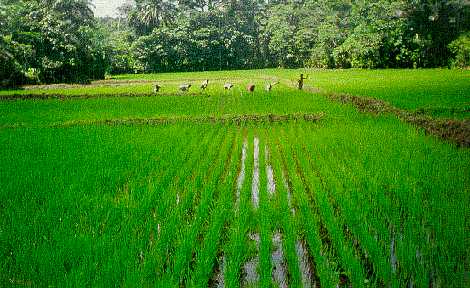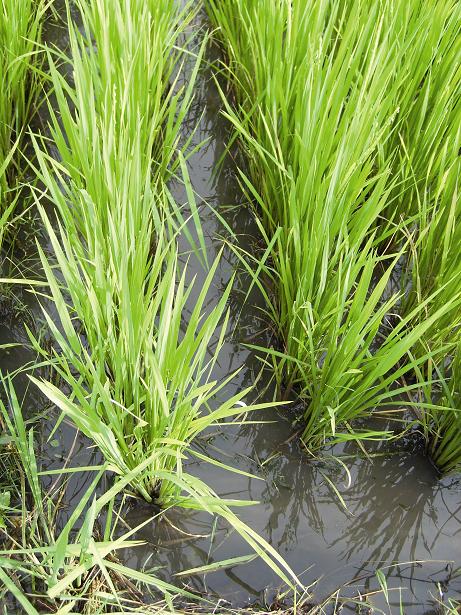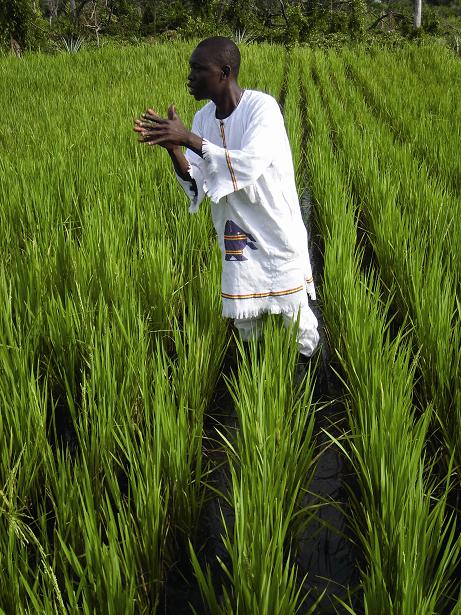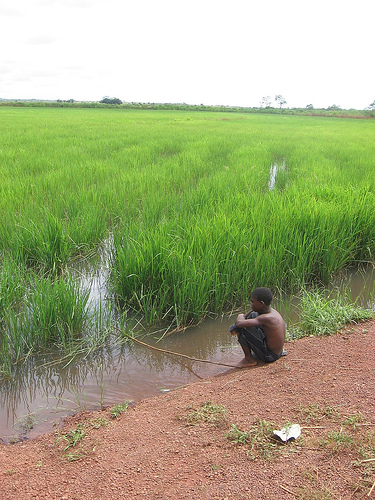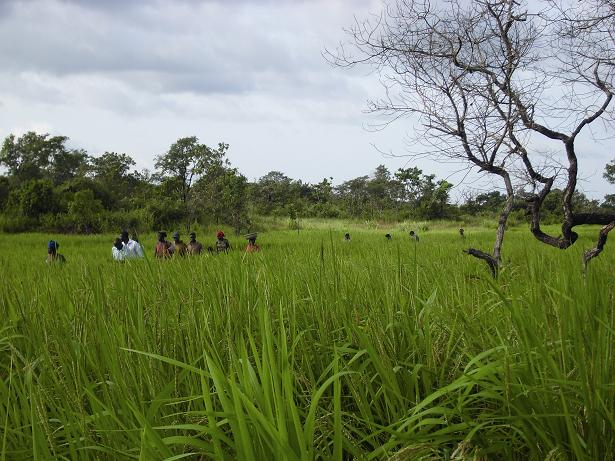|
SOCIALLY RESPONSIBLE GREENFUND
SIERRA LEONE
Around 60 percent of sub-Saharan Africa’s (SSA) demand for rice is met by imports, costing about
$6billion in 2008. Marketable crop surpluses in SSA represent less than one third of total output. Rather
than being a threat, the increasing rice price is an unique historical opportunity to use latent potential for
production of Swamp Rice in Sierra Leone.
Rice is Africa’s most rapidly growing food source, but production has not kept pace with demand.
As a result, rice self-sufficiency (i.e., ratio of production over consumption) has slid from 112% in
1961 to just 45% in 2008. As a result, sub-Saharan Africa imports 10million tons of rice annually at a cost
of around US$6billion. This is the continent’s largest import bill after petroleum. The per capita rice
consumption in Sierra Leone is 100kg. Sierra Leone has a population of 5million.
The country is heavily reliant on imports for its staples like rice. When we visited at the end of February
2009, the high price of a standard 50kg bag of rice caused tempers to flare on the streets of Freetown. It
was then around 120,000leones (approximately $40), whereas a 25kg bag cost 70,000leones ($23). “We will not
succeed in poverty reduction if we don’t change the circumstances of the farmers” President Ernest Bai Koroma
told us last year.
I. MASAMA RICE INVESTMENT PORTFOLIO: MRP-1/2009
The
The business that endures will foster long-term success and sustainable profits through collaborative relationships
with stakeholders, coupled with investments in both their current and future workforce.
MPI aims to be able to generate long term sustainable returns for investors without compromising the principles
of sustainable development. The
MPI offers you the opportunity to benefit from the MASAMA RICE PORTFOLIO (MRP-1/2009)
providing a long term commitment to manage your investment.
The MASAMA RICE PORTFOLIO (MRP-1/2009) provides you with an opportunity to
invest in sustainable and durable agri-cultivation.
Your rice-field property will grow, produce and process rice in the Loko Masama Chiefdom of Sierra Leone
with expert support at all stages of the process. Once growing the rice fields will yield 3 times a year
and the rice processed will be sold on your behalf.
Uniquely, the MASAMA RICE PORTFOLIO (MRP-1/2009) additionally offers
the opportunity to invest in the emission reduction potential of rice production.
By investing in the MASAMA RICE PORTFOLIO (MRP-1/2009) you have the potential
to benefit from any proceeds from the scale of Emission Reduction Units (ERUs) throughout the life of the investment
term in addition to the cash returns from the sale of your rice.
It takes one (1) year to produce the first yield and from then onwards three (3) times a year, generating a minimum
possible profit of $1,100/ha/year- a result of 22% on investment.
WHAT IS SWAMP RICE?
Swamp rice is the most wanted and most traded staple crop in West Africa. With support from the UN a special
rice NERICA has especially been developed for West Africa. It contains the full nutrition and preferred taste demanded.
In the process the skin is separated from the seed and the seed dried and flavored. Rice is cost-effective as it does
not need to go through expensive hydrogenation processes. Its high content of natural antioxidants and its stability
at high temperatures make it an excellent staple food.
WHY INVEST IN RICE?
Rice is one of the major necessities and with global demand, including growing Asian economies such as China and India.
Fields producing rice is increasingly important in the overall markets. Fields developed in the Masama Rice Portfolio
provide good quality raw material for the production of cooking rice for the domestic and regional market.
HOW THE INVESTMENT WORKS
The MASAMA RICE PORTFOLIO starts when a full parcel of 500ha has been assigned to investors. A minimum investment
certificate concerns a five (5) hectares (ha) big block to be planted with NERICA rice. The investment sum is $5,000/ha.
The first rice crop starts producing 6 months after preparation of the land and then produces 3 times a year 3.675ton
processed rice per hectare per harvest (11ton/year), generating a minimum profit of $100/ton ($1,100 per year – 22%).
In contrary with forestry and palm oil projects, rice generates income and profit immediately in the first year of planting.
MASAMA RICE-TEAM
MPI has formed a team of international industry experts and plantation managers from The Netherlands, Africa and China
who will manage the investment throughout all stages of the project. The plantation managers will look after the field
from the nursery stage to the day of sales. An independent plantation assessor (reputable international auditing company)
will frequently survey the property and provide independent evaluations and supervise the project on behalf of the investors.
Who may be interested in this investment?
As with any investment there are risks to be considered, and as this is a middle term natural resource
investment, many variables may affect the performance of the investment. General investment risks, risks
specific to the land and rice include agriculture and environmental risks as well as risks associated with
the global price fluctuations of rice. The return you receive from MASAMA RICE PORTFOLIO
(MRP-1/2009) could be
less than you might earn on other investments, it even could be nil, but it also can be beyond expectation.
Key risks include
Investors should read the section on “Investment Risks” in the Product Disclosure Statement (PDS) for a detailed
discussion of the risks of investing in the MASAMA RICE PORTFOLIO.
How to apply?
Before you invest in the MASAMA RICE PORTFOLIO it is important that you read and understand the terms,
conditions and the investment risks set out in the PDS. To apply, simply complete the application form attached
to the PDS and send it directly to MPI. Remember, as with any investment decision, you should consult your financial,
legal and taxation adviser for personalized recommendation and advice.
More Information
For more information on Mano Properties & Investment SL Ltd (MPI)
|
